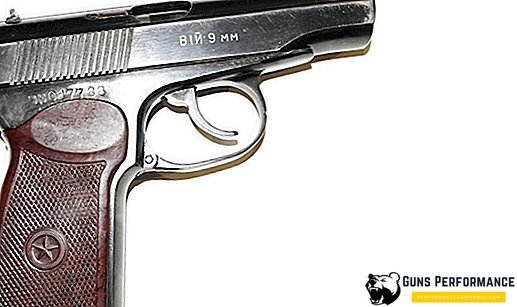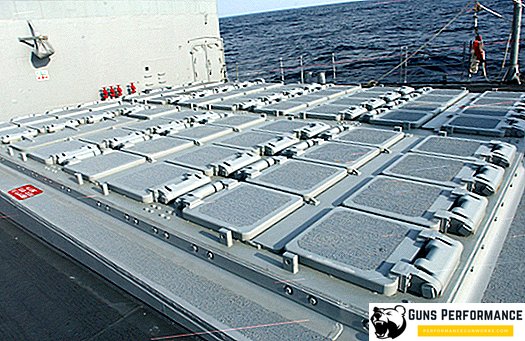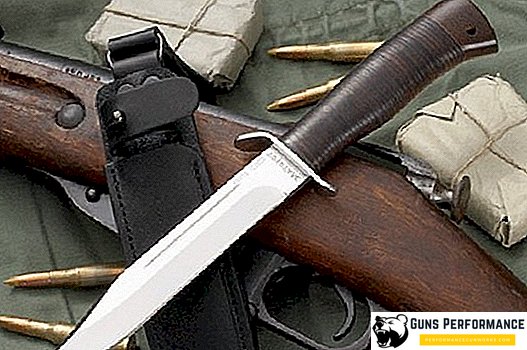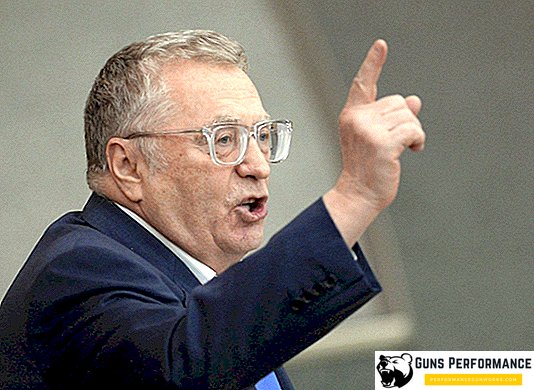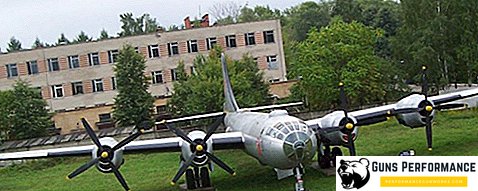
The Tu-4 is a Soviet piston strategic bomber, put into service in 1949 and operated until about the mid-60s. This aircraft can be called unique, and there are several reasons for this. The Tu-4 is the first Soviet carrier of nuclear weapons, that is, it can be safely called the pioneer of national strategic aviation. It is also an exact replica of the B-29 American bomber.
The Soviet military-industrial complex throughout its history has never disdained plagiarism, but the Tu-4 is the only such complex product completely copied (up to the interior details) from the original. The only exception was the Soviet cannon armament of the aircraft and engines.
This aircraft became the basis of nuclear power in the initial period of the Cold War. The Tu-4 was not intercontinental, but its range was enough to strike at US bases deployed in Western Europe and the UK.
The creation of the Tu-4 allowed the Soviet aviation industry to move to another technological level, and to do so in the shortest possible time. Also, one should not forget when this aircraft was created: just a few years after the end of the war, half of the country was still in ruins, people lived in poverty and starving.
But this bomber was really needed: the former allies of the anti-Hitler coalition moved into the category of potential adversaries, plans for nuclear strikes on the USSR were already prepared at the Pentagon, and in 1946 Churchill delivered his famous speech in Fulton, which is considered the official start of the Cold War. The Soviet Union already had nuclear weapons, but without suitable means of delivery, it largely lost its strategic importance.
That is why all the forces were thrown at the development of the long-range bomber: D. S. Markov was appointed the lead designer, and A. N. Tupolev as the general designer. He supervised the development of the aircraft all-powerful head of state security Lawrence Beria.
The first flight of the Tu-4 made in 1947, about 1,200 units of this aircraft were produced. Mass production continued until 1952.

History of creation
Heavy multi-engined bombers began to be created already during the First World War. The first full-fledged car of this class was the Russian four-engine biplane "Ilya Muromets", designed by Igor Sikorsky back in 1914. A little later, similar aircraft also appeared in the air force of other countries participating in the conflict, outwardly they strongly resembled a Russian bomber. By the end of the war, aviation could already use bombs of quite serious calibers (up to 1 ton), and the accuracy of bombing significantly increased.
In 1921, the first attempt at theoretical substantiation of the use of heavy aircraft — the book by Italian General Giulio Due, Air Dominance — appeared. The author believed that now heavy bombers can decide the outcome of any military conflict, simply by bombing the infrastructure of the enemy. According to Douai, aviation must completely change the course of the coming wars. Whereas before, military operations were the lot of the armed forces, and the population of the warring countries lived a more or less peaceful life, now all areas to which combat aircraft are able to fly must come under attack. The general believed that the main task of aviation should be the destruction of the enemy's economy - cities, factories, roads and government agencies that are in enemy rear. Duee believed that the psychological impact of massive bombing on the civilian population would force him to demand capitulation from his own government.
It should be noted that the Italian general practically formulated the concept of the use of strategic aviation during the Second World War. It was in this way that the United States and Great Britain used their air forces against Germany and Japan.
Under the terms of the Versailles Treaty, Germany and Austria were forbidden to engage in the development of bomber aircraft. Therefore, German aircraft designers built multi-engine passenger aircraft, which, if necessary, could be quickly transformed into combat aircraft.
In the 1920s and 1930s, work on heavy long-range bombers was actively carried out in the Soviet Union. The most famous Soviet machine of the period was the TB-3, which was developed in the Tupolev Design Bureau and was produced until 1937. This aircraft participated in the battles at Khalkhin Gol, in the Finnish war and was quite actively used at the initial stage of the Great Patriotic War.
Soviet cars had a cladding of corrugated aluminum, which increased the strength of the hull, but had a negative effect on the speed of aircraft. Bombers had a non-retractable landing gear and open cockpit. Their speed did not exceed 200 km / h.
In the mid-1930s, the next generation of bombers began to be built in the USA, with smooth skin, retractable landing gear and powerful engines. Their speed was not inferior to the fighters of the time. The first car of this class was the B-17 bomber, which entered service with the US Air Force in 1935.
In the USSR, work on the creation of new long-range bombers did not stop, but before the war, emphasis was placed on the development of front-line aviation. In the USA and Great Britain, on the contrary, a lot of attention was paid to the creation of new multi-engined heavy bombers, capable of massive damage to cause serious damage to the industrial centers of the enemy.
At the beginning of the war, the British Air Force received a heavy four-engine Avro Lancaster aircraft, which could carry up to 10 tons of bombs. It was he who became the basis of British bomber aircraft during the Second World War.
The basis of the American Bomber Air Force became aircraft B-17 and B-24. A further development of this class of aircraft in the United States was the B-29 Superfortress, developed in 1942. This car is called the best heavy bomber of the Second World War. And for good reason. The speed of the B-29 reached 600 km / h, and the ceiling - 12 km. At this altitude, the bomber was practically not afraid of enemy anti-aircraft fire, and a large number of firing points reliably protected it from enemy fighters, creating a real sphere of fire around "Super Strength".

The use of strategic aviation in the European and Pacific theater of military operations showed the undoubted effectiveness of these machines. And the appearance of nuclear weapons made these planes strategic. It is not enough to have a nuclear bomb, it also needs to be delivered to the target.
By the way, the leadership of the Soviet Union during the war appealed to the Americans several times with a request to transfer the B-29 bombers to the USSR under Lend-Lease, but always received a polite, but resolute refusal. The Soviet Union did not have the opportunity to engage in the independent development of heavy bombers during the war, since all resources were spent on the design and construction of front-line aviation.
However, in the USSR they understood the inevitability of military-political confrontation with yesterday’s allies, therefore attempts to start building a heavy bomber were nevertheless undertaken. In addition, in 1943, the Soviet atomic program was launched, and for a nuclear bomb you need a carrier with the appropriate characteristics.
In 1943, the Soviet People's Commissar of Aviation Yakovlev turned to Tupolev with a proposal to develop a sketch of a new heavy bomber, based on the American B-29. Tupolev Design Bureau, in fact, was the only team in the USSR that had serious, pre-war experience in creating such machines. Similar tasks were sent to the Myasishchev Design Bureau and the Nezzal Design Bureau.
In May 1944, Tupolev people took up the proposed work.
In the meantime, a lucky combination of circumstances greatly simplified the work of Soviet designers. At the final stage of the war, the US Air Force launched a massive bombardment of Japan and the Japanese troops in Manchuria. During the sorties, several B-29 bombers were damaged. Four of them landed on Soviet Far Eastern airfields. Their crews were interned, and Stalin decided to keep the newest American bombers.

In May 1945, the aircraft designer V. M. Myasishchev proposed copying an American B-29 aircraft "in view of the considerable backlog of the Soviet Union from the United States in the field of aircraft manufacturing." He proposed to carry out these works by his own bureau and the KB of Nezval. The proposal was immediately reported to Stalin, who apparently liked this idea. At least, the initiator was not repressed. However, for a final decision, he studied the opinion of Tupolev on this issue.
The designer was called to the Kremlin, where he had a long and thorough conversation with Stalin. This episode is described in detail in Lazarev’s book “Touching the Sky”. The leader was interested in Tupolev’s opinion about the qualities and characteristics of the American bomber, and the capabilities of the domestic industry to copy this aircraft. The designer praised the American aircraft, especially singled out its speed characteristics and power of onboard armament. At the same time, he noted that it would be very difficult to completely copy such a machine, and it would take a lot of time to coordinate the production of its individual components and assemblies with various ministries. Stalin gave the designer the widest powers, but severely limited it in time: he wanted to see the new plane by mid-1947.

In the shortest possible time, three of the four aircraft were transferred from the Far East to Moscow, one of them was completely disassembled, the second was used as a reference, and test flights were conducted on the third. The fourth car was sent to one of the operating parts of the Air Force. To the great joy of the designers, a set of technical documentation was found in one of the airplanes.
The aircraft during the development of the received index B-4. After the B-29 was disassembled a separate group of engineers and technologists was involved in each individual unit. The detail was weighed, measured, described and photographed in detail, and spectral analysis was also carried out in order to understand what material it was made of. The designers had the task to completely copy the American plane, and they performed it verbatim. That is why a stand for soda and an ashtray appeared in the cockpit, although it was strictly forbidden for Soviet pilots to smoke during the flight.
Reached anecdotal situations. A small hole was found on the left wing. Neither experts in aerodynamics, nor experts on structural strength could not say what it is for. It is likely that the worker at the factory made him accidentally, by mistake, and then he was simply forgotten to be repaired. However, on all Soviet Tu-4s, a tiny hole made by the thinnest drill appeared on the left wing.
Almost all of the inside of the aircraft turret was painted green, only a small part of it remained white at the very end. It is possible that the American soldier who painted it just ran out of paint. However, all the crews in the Soviet aircraft were painted in a similar way.

However, it was very difficult to make an airplane an exact copy of the B-29. One of the main problems was the inch measurement system in which the bomber was made. Even before the start of the project, the Soviet representatives in the USA, Great Britain and Canada began to buy the necessary measuring equipment, but this did not solve all the problems. All dimensions of the aircraft (including the thread pitch and the cross section of the wires) had to be converted to millimeters and only then be made.
But there were a lot of difficulties. The thickness of the V-29 lining was 1/16 inch; when converting it to the metric system, it turned out to be 1.5875 mm. The Soviet industry was not able to make an aluminum sheet of such thickness. When rounding this value to 1.6 mm, the weight of the entire machine increased significantly - it could not achieve the required flight performance (range, speed, ceiling). And with a decrease in the thickness of the case to 1.5 mm, its strength decreased. As a result, it was decided to use aluminum sheets of various thicknesses for the aircraft's plating - from 0.8 to 1.8 mm. A similar problem arose with the cross section of the wiring of the aircraft. The existing standards in the USSR were either less than the required value, or substantially exceeded it. In the first case, it was impossible to achieve the desired voltage, while in the second, the mass of electrical equipment significantly increased.
On the Tu-4 decided to put the domestic engines, although the Soviet them could be called with a stretch. Even before the war, the USSR entered into a license agreement with the American company Wright for the production of aircraft engines. So the Soviet ASH-73 engine was very similar to the Wright R-3350-79, which stood on the V-29. However, carburetors, bearings, turbochargers were completely copied from the "trophy" bomber.
On the Tu-4 were installed more modern radio stations, which were copied from lendlizskih aircraft of the later series.
Initially, it seemed that there would be no particular problems with the repetition of the armament system - it would be enough just to install a similar number of firing points and hang up bombs of the required caliber, but in reality the task turned out to be much more difficult. It was necessary to make sights and breeders, electric motors, ribbons for feeding cartridges and much more. The sights that were mounted on the B-29 did not fit, because the Soviet bombs had ballistics different from those used in the US Air Force.

However, the most difficult problem was the computers that remotely controlled the defensive armament of the aircraft. They took into account the parallax goal, making the necessary amendments when shooting. Due to this, each of the five shooters could control any turret from their place. A very big problem was the copying of the remote control selsyn drives for aircraft guns. Later, the system developed by the construction of the Tu-4, was used on all Soviet bombers.
Confusion came with copying the system "friend or foe". Common sense dictates that you need to put your own identification system on your planes, but in the Stalinist state, orders from above were often taken literally, so the equipment was simply copied from the American one, and then they thought hard. As a result, it certainly had to be redone.
More than sixty research institutes, departments and enterprises took part in the creation of the new Soviet bomber. Each of the subcontractors was engaged in copying a separate node or part. It is possible that because of this, the Tu-4 very soon received the nickname "brick bomber".
The B-29 without fuel and oil weighed 34,930 kg, the first Tu-4, made in its image and likeness - 35,270 kg. This without any mockery can be called a brilliant result.
In the spring of 1947, the first Tu-4 was ready for flight. He first took to the air on May 9, 1947. Although various tests continued until 1949, the bomber was immediately put into mass production. The first three aircraft took part in the air parade of 1947, as originally demanded by the country's leadership.

The tests of the aircraft were rather difficult, and soon the third Tu-4 was lost due to engine fire. The fourth car was installed cannon armament (instead of machine gun). A lot of troubles to designers brought the power plant of the aircraft, turbochargers were a weak point. Gradually, however, the main problems were resolved, and at the end of 1948, Stalin personally signed the act of ending the State tests of the aircraft.
The armament of the Tu-4 Air Force began to arrive in 1949.
Later attempts were made to develop an in-flight refueling system for the bomber, but they ended in failure. Similarly, it happened with outboard tanks - they were installed on only a few machines. So, despite the impressive practical range (more than 6 thousand km), the plane was not able to reach the territory of the United States and return.
For the creation of the Tu-4 Tupolev received the Order of Lenin.

Description of construction
The Tu-4 aircraft is an all-metal monoplane, made according to the classical scheme with an average wing arrangement. The rudders and ailerons of the aircraft had linen trim. The bomber had a single-fin vertical tail.
Structurally, the aircraft fuselage was divided into five parts: the pressurized cabin in the nose of the car, the central part of the fuselage, the middle pressurized cabin, the tail section and the feed pressurized cabin. The nasal and middle pressurized cabin was connected using a germolase with a diameter of 710 mm.
The Tu-4 had a tricycle landing gear with a nose wheel.
Two bomb compartments were located in the central part of the fuselage.

The wing of the aircraft had a trapezoidal shape with a large elongation and two spars. В крыле располагались двадцать два мягких топливных бака, общим объемом более 20 тыс. литров. Каждый из двигателей имел собственную топливную и маслосистему.
Ту-4 оснащался антиобледенительной системой, которая состояла из пневматических протекторов передней кромки крыла, стабилизатора и киля. Чтобы избежать обледенения винтов, перед полетом их обливали смесью спирта и глицерина.
Фонарь носовой гермокабины был вписан в обводы фюзеляжа. Каркасы носового фонаря и фонаря кабины пилотов были изготовлены из специальных магниевых сплавов, а остекление из органических стекол. Создание герметических кабин обеспечило экипажу комфортные условия работы, невиданные ранее в советских ВВС. Приборы и оборудование были размещены удобно и легкодоступно.
Самолет оснащался высотным оборудованием, в состав которого входили устройства для подачи воздуха в кабины, система обогрева и контроля давления. Воздух подавался от турбокомпрессоров двигателей. На высоте семь километров поддерживалось давление, соответствующее высоте 2,5 км.

Экипаж самолета состоял из 11 человек: двух пилотов (один из них выполнял функции командира бомбардировщика), штурмана, радиста, механика, оператора РЛС и четырех стрелков. В передней гермокабине были расположены места пилотов, радиста, штурмана и бортмеханика.
В средней гермокабине находились места для трех стрелков и оператора бортовой РЛС. Передняя и средняя кабина соединялась гермолазом. Также в средней кабине располагалась центральная прицельная станция, спальные места для экипажа, термосы с пищей и туалет.
В центральной части фюзеляжа находились два бомбоотсека (передний и задний) с индивидуальными бомболюками, антенна и блоки РЛС.
В задней части самолета размещалась кормовая герметическая кабина, в которой находилось место для хвостового стрелка.
Силовая установка самолета состояла из четырех двигателей воздушного охлаждения АШ-73ТК, находящихся в мотогондолах крыла. Каждый из них имел мощность 2,4 тыс. л. с. и оснащался турбокомпрессором и центробежным нагнетателем. Топливо - бензин.
Двигатели имели четырехлопастные винты, с изменяемым в полете шагом.
Значительным достижением для советской авиационной промышленности, которому она обязана эпопеей с копированием В-29, стало объединение всех элементов оборудования самолета в отдельные системы. Это было сделано впервые. Автоматика существенно повысила эффективность работы всех систем бомбардировщика. Десятки электромоторов, сервоприводов и триммеров помогали экипажу управлять различными узлами и элементами самолета: шасси, закрылками, рулями высоты и направления. Всего на бомбардировщике было установлено 150 электродвигателей - немыслимое количество для советского самолета. Для их питания Ту-4 был оснащен электрогенераторами и аккумуляторной батареей.
Пилотажно-навигационное оборудование бомбардировщика состояло из магнитного и гироскопического компаса, сопряженного с автопилотом, радиокомпаса, автопилота и навигационного координатора НК-46Б - первого в СССР бортового лампового компьютера, с которым были сопряжены все остальные элементы пилотажно-навигационного комплекса. Он производил исчисление пути, пройденного самолетом, и рассчитывал его текущие координаты.
Также в состав навигационного оборудования входил радиодальномер СД-1 "Шиповник", который позволял рассчитывать дистанцию до начала ВПП. Это позволяло садить Ту-4 "вслепую", в условиях плохой видимости.
Радиолокационный бомбоприцел "Кобальт" позволял штурману определять крупные промышленные центры в любое время суток и при любой погоде на расстоянии до 90 км, небольшие города можно было обнаружить на удалении 45-50 км. Прицел был полностью скопирован с американского образца.
В состав оборонительного вооружения Ту-4 входило 10 пушек Б-20Э или НР-23, размещенных в пяти башня с дистанционным управлением. Стрелять из них можно было из любого места самолета. Нормальная бомбовая нагрузка Ту-4 составляла 6 тонн. Модификация Ту-4А могла брать на борт одну ядерную бомбу.
Позже на самолетах стали устанавливать специальные шторки и светофильтры, которые защищали пилотов и штурмана от светового импульса ядерного взрыва.
Для советских ВВС бомбардировщик Ту-4 был очень сложен. Он требовал более высокой квалификации пилотов и обслуживающего персонала, но, несмотря на это, летчики любили эту машину. Основной причиной такого отношения было удобство его эксплуатации, заложенное в конструкции. Все приборы и элементы оборудования были размещены продуманно и легкодоступно. Особенно большое внимание уделялось удобству работы членов экипажа, что ранее было несвойственно советским самолетам.
С точки зрения развития отечественной авиации, создание бомбардировщика Ту-4 трудно переоценить. Эти работы позволили отечественному авиапрому выйти на совершенно другой технологический уровень. Сотни и тысячи советских конструкторов и технологов познакомились с новыми видами материалов и оборудования. На Ту-4 был обкатан метод "обратной разработки", который еще не раз использовался советскими специалистами в будущем. Используя его, отечественные инженеры постигали конструкцию зарубежных управляемых ракет и боеприпасов объемного взрыва, электроники и систем защиты бронетехники, добытые советской разведкой. Благодаря этому были сэкономлены миллиарды рублей и годы кропотливого труда.
Если же говорить о Ту-4, то здесь картина не будет такой однозначной. В любом случае следует признать гениальность Туполева, в первую очередь как организатора, способного в столь короткий срок решить такую нетривиальную задачу. Кроме того, самолет действительно получился неплохим, а СССР получил первый дальний бомбардировщик-носитель ядерного оружия.
Однако время поршневых самолетов уходило в прошлое. Прославленный В-29 становился легкой добычей для реактивных МиГ-15 в корейском небе, и очень ему пришлось перепрофилироваться в ночной бомбардировщик. В то время, когда Ту-4 только начал поступать на вооружение советских ВВС, в США уже разработали более современные В-36 и В-50, которые по многим характеристикам превосходили В-29.

А уже в середине 50-х годов в стратегической авиации США началась "турбовинтовая" эра, и американская стратегическая авиация получила на вооружение турбореактивный В-52, который находится в строю и поныне.
Specifications
| Модификация | Ту-4 |
| Wingspan, m | 40,05 |
| Length m | 30,18 |
| Высота, м | |
| Площадь крыла, м2 | 161,7 |
| Масса, кг | |
| пустого самолета | 32270 |
| normal takeoff | 47500 |
| maximum takeoff | 66000 |
| engine's type | 4 ПД АШ-73ТК |
| Power, hp | 4 х 2400 |
| Speed km / h | |
| maximum | 558 |
| крейсерская | |
| Flight range, km | 5100 |
| Разбег, м | 960 |
| Пробег, м | 1070 |
| Practical ceiling, m | 11200 |
| Экипаж, чел | 11 |
| Armament: | Стрелковое вооружение - первоначально 10 ×УБ (12,7 мм), затем 10×Б-20Э (20 мм) или НС-23 (23 мм) |
| Бомбовая нагрузка 6000-8000 кг (6-8 ФАБ-1000) |




